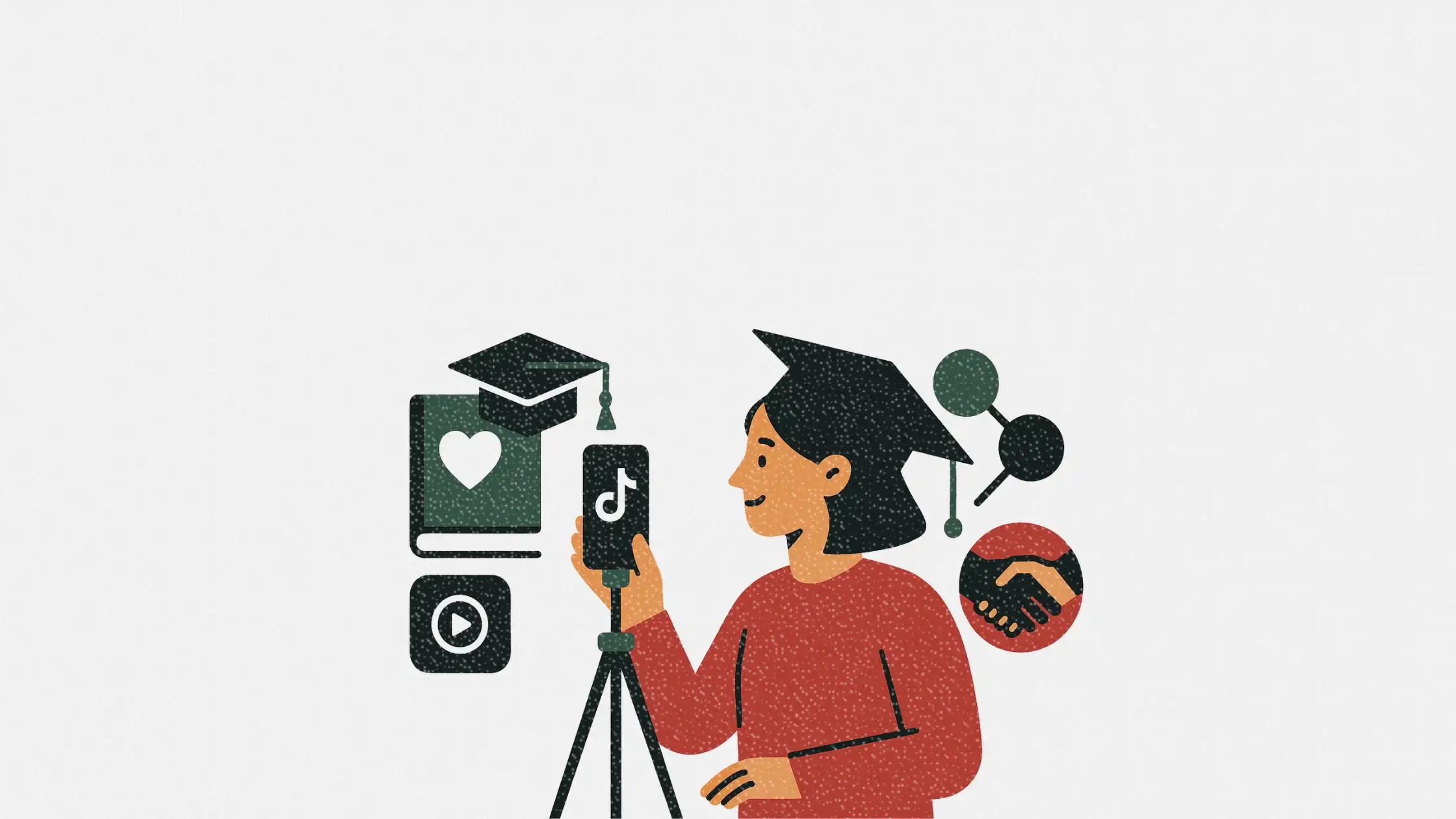The rise of student influencers
As student creators gain traction, content marketers must adapt

With brands increasingly favoring authentic, community-driven marketing, college students have become the next big bet. They're not just joining the creator economy. They're helping redefine it. Whether on TikTok, Instagram, or in brand ambassador programs, student creators are emerging as high-impact voices that speak peer-to-peer, not top-down.
This article explores why student influencers are gaining traction, how brands are partnering with them, and what content marketers need to know to stay ahead.
Short on time?
Here’s a table of contents for quick access:
- Why student influencers are gaining traction
- How brands are collaborating with student creators
- What this shift means for content marketers
- How to work with student influencers effectively
Why student influencers are gaining traction
Trust is the foundation of every meaningful relationship, whether personal or professional. Before choosing any service, people need to feel confident that they are making the right decision. When selecting a service for essay buying, students often prioritize reviews and recommendations to ensure they are investing in quality help.
Trust plays a crucial role in guiding decisions, from choosing a local mechanic to hiring someone for a freelance job. Without trust, no transaction, no matter how seemingly beneficial, will stand the test of time. Students are proving that influence doesn't require millions of followers. It just needs trust.
Among Gen Z, authenticity matters more than polish. That’s exactly where student creators excel. Platforms like TikTok have democratized influence, allowing micro and nano influencers (with under 10k followers) to dominate engagement charts.
Some numbers say it all:
- 74% of students say social media impacts their buying decisions
- 84% of Gen Z trust influencers more than traditional ads
- Over 60% of student shoppers discover new brands through social media, often via campus-based creators
These student-led micro-communities move fast. They often dictate trends before mainstream channels catch up. Universities have taken notice too, launching campus ambassador programs to tap into peer-to-peer influence.
With majority of influencers in 2025 now aged 18–24, this isn’t a side trend. It’s the frontline of the next marketing wave.
How brands are collaborating with student creators
From lifestyle to edtech, brands are building new playbooks around student creators.
Apparel and tech brands were early adopters, but now education platforms are entering the mix.
These creators bring a powerful mix:
- Affordability: Their rates are a fraction of macro-influencers
- Relatability: They live the product experience, not just promote it
- Engagement: Their communities comment, share, and convert
Brands are also recognizing that student creators don’t need celebrity-level reach to deliver results. Instead, they bring campus-level granularity. This means niche reach with high trust.
The best collaborations let students speak their truth. It's not about hitting a brief. It's about giving them the freedom to show how a brand fits into their life, not the other way around.
What this shift means for content marketers
For content teams, this student influencer trend is a signal to shift strategy.
First, micro-communities matter more than ever. Audiences aren't just segmented. They’re tribal. A student in Austin might follow creators on their own campus before they trust a national campaign.
Second, marketers need to redefine influencer ROI. Instead of asking “how many followers?” consider:
- How engaged is their community?
- Are they seen as credible within their niche?
- Can they drive actions like sign-ups or downloads?
Marketers should also consider integrating influencer content into the wider content funnel. Student voices can become product testimonials, user-generated content, or even newsletter spotlights.
Budgets are shifting in this direction. According to Sprout Social, 26% of agencies now spend over 40% of their marketing budget on influencers. Why? Because 86% of consumers say they’ve bought something based on influencer content.
And students aren’t looking to just follow instructions. 65% of influencers want to collaborate creatively, not just follow scripts. The lesson here: treat them like co-creators, not media channels.
How to work with student influencers effectively
Working with student creators doesn’t require big spend. It requires the right approach.
Here’s how content marketers can get started:
- Start small: Test with a few campus ambassadors or student clubs before scaling
- Prioritize creative freedom: Skip rigid briefs and let students speak in their own voice
- Think long-term: Build partnerships over a semester, not just one post
- Track the right metrics: Go beyond likes. Use referral codes, campus reach, and actual conversions
- Follow ethical best practices: Ensure clear disclosure and fair pay
Many brands succeed with budgets under US$50k for influencer campaigns, especially when working with nano-creators. With the right metrics and relationships, small investments can deliver big results.
Student influencers aren’t just shaping trends. They’re building the future of marketing.
For content marketers, now’s the time to engage with this grassroots wave. It’s a chance to build authentic relationships with communities who will shape consumer behavior for years to come.
Influence is getting younger, more authentic, and hyper-local. The smartest brands are already listening.

